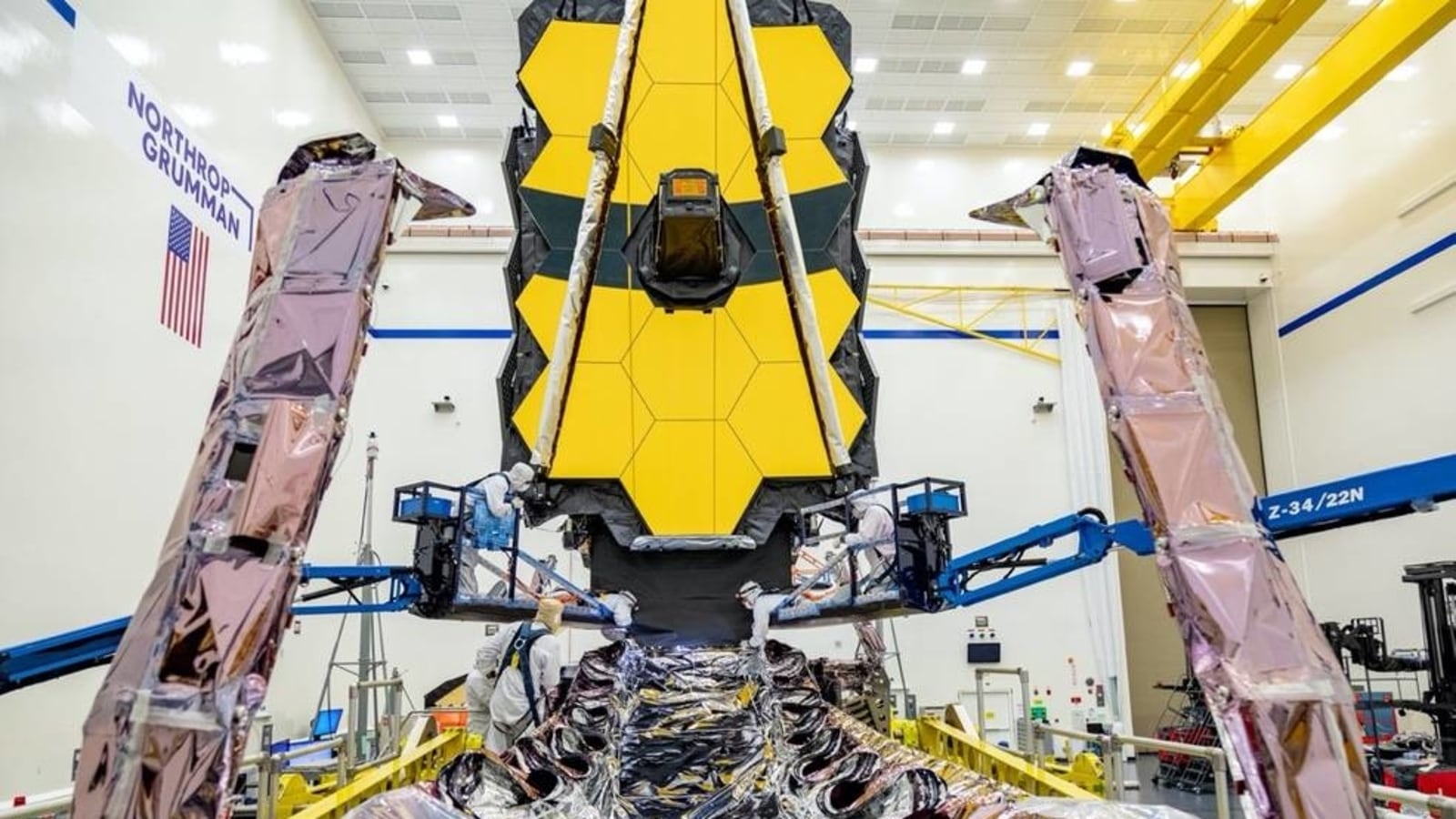World's biggest telescope, James Webb Space Telescope, almost ready, set to complement Hubble
Since the James Webb Space Telescope is much bigger than the Hubble Telescope, it will be able to peer further back into time than has so far been possible.

When it is shot into space, it will be a dream come true for astronomers and science fans alike. NASA's James Webb Space Telescope (sometimes called JWST or Webb) has been designed as an orbiting infrared observatory that will complement and extend the discoveries of the Hubble Space Telescope, with longer wavelength coverage and greatly improved sensitivity. What the longer wavelengths allow it to do is look that much closer at the beginning of time itself. It also enables it to hunt for the unobserved formation of the first galaxies and look inside dust clouds where stars and planetary systems are forming today.
The James Webb Space Telescope is expected to fly into space later this year, sometime in October, hitching a ride on the powerful Ariane V rocket. It is an extremely complex mission with about 50 deployments that need to occur after launch to set up the Webb Telescope's vast system and there are nearly 350 ‘single point failures' that need to be addressed for the mission to be successful. All this work will be keeping the mission controllers on the edge of their seats even after 3 weeks or so post-launch.
Also read: Looking for a smartphone? Check Mobile Finder here.
Webb vs Hubble
Unlike the Hubble telescope, which orbits the Earth at an altitude of about 570 kilometres, the Webb telescope will not actually orbit the Earth, rather it will sit a whopping 1.5 million kilometres away, at a vantage point that will allow it to stay in a stable, predictable orbit around the Sun. At that point, James Webb's solar shield will block the light from the Sun, Earth, and Moon.
Also, another thing that is different from Hubble is that with its ability to view the Universe in longer wavelength infrared light, James Webb Telescope will be capable of seeing some of the most distant galaxies in our Universe. It will be further than the visible/ultraviolet light view of Hubble. This is because light from distant objects is stretched out by the expansion of our Universe, an effect known as redshift. As such, while Hubble was able to view “toddler” galaxies, James Webb will begin to peer back even to their birth.
Catch all the Latest Tech News, Mobile News, Laptop News, Gaming news, Wearables News , How To News, also keep up with us on Whatsapp channel,Twitter, Facebook, Google News, and Instagram. For our latest videos, subscribe to our YouTube channel.































